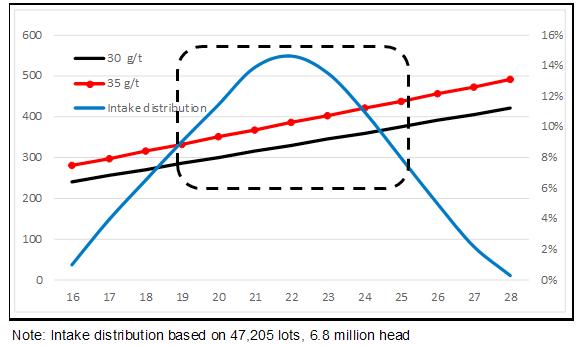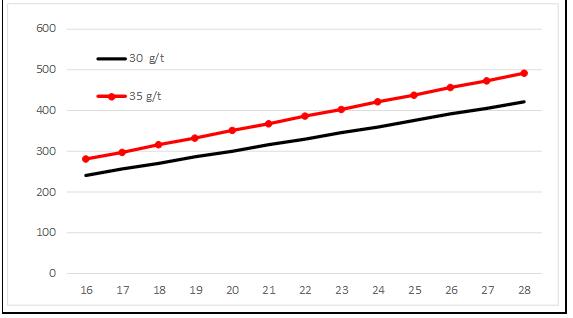
1 minute read
Industry Update Understanding Medicated Feeds
Part Three - How feed intake affects consumption of medicated feed additives
By: Dr. Pete Anderson, Midwest PMS, LLC
With the implementation of the Veterinary Feed Directive (VFD), veterinarians will be involved in assuring that medicated feed additives are fed according to label instructions.
A key to that compliance will be understanding how variation in feed consumption within a population of cattle affects the levels of feed additives that are consumed.
Labels for FDA-approved feed additives often list allowable levels, one for feed and another for consumption by the cattle. For example, monensin can be mixed into feed at levels from 5 to 40 grams per ton of feed (g/t), to provide not less than 50 nor more than 480 milligrams per head per day (mg/hd/d). Monensin is not covered by the VFD but is used as an example because most feeders have experience with monensin. Allowable limits for common medicated feed additives are listed in the appendix at the end of this article.
Since monensin primarily affects the bacterial population of the rumen and does not directly affect the animal, it makes sense to dose the feed (or the rumen), rather than selecting a dose based on the weight of the animal.
As cattle increase in weight, they tend to eat more and have more rumen contents so providing more monensin per animal makes sense. Formulating diets and supplements to provide a constant amount of monensin in each ton of feed allows cattle that eat more to get a higher daily dose.
Chart 1 illustrates monensin consumption, in mg/hd/d, at common feed intake levels (dry basis) with monensin included in the diet at 30 or 35 g/t. As would be expected, monensin consumption per head increases as intake level increases and is higher with 35 g/t than 30.

Chart 2 includes the same data but with two additional elements. The bell-shaped curve (in blue) describes a distribution of average dry matter intake, based on a population of 6.8 million cattle fed in yards that submitted closeout data for the Midwest PMS database.











